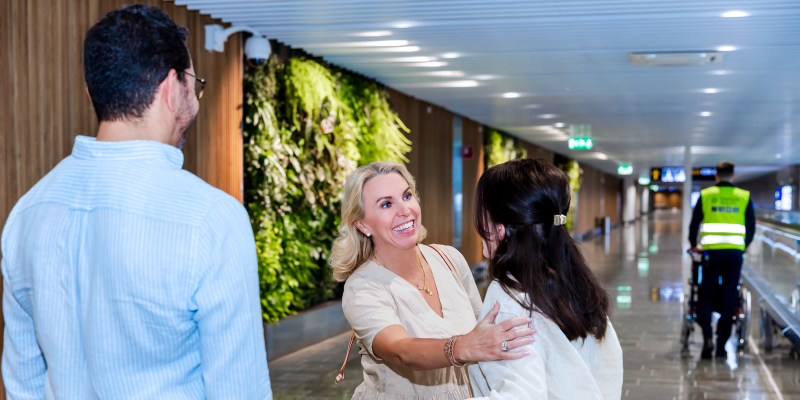Swedavia’s Annual and Sustainability Report 2022
Swedavia’s Annual and Sustainability Report for 2022 is available as of the 30th of March on the company’s website. The year 2022 was characterised by a robust recovery in the aviation market, despite economic and security policy uncertainty around the world. Travel at Swedavia’s airports increased, and Swedish connectivity improved significantly as a growing number of new routes were established. Important steps were also taken to accelerate the green transition needed by the airports and the aviation industry.
In 2022, air travel within as well as to and from Sweden rose sharply after the previous years of the Covid-19 pandemic. For Swedavia, the year was to large extent a matter of meeting the growing demand and scaling up operations, which had been heavily impacted by the pandemic.
The green transition continues
Some of the important climate measures implemented in 2022:
•At Stockholm Arlanda Airport, Göteborg Landvetter Airport and Malmö Airport, fossil carbon dioxide emissions from landing air traffic decreased by a total of about 175 tonnes using so-called curved approaches on 967 occasions. Swedavia was granted permission to carry these out as recently as in 2021.
•Swedavia conducted its annual public tender process to purchase sustainable aviation fuel (SAF) in order to promote sustainable business travel. Through the tender, nearly 170 tonnes of SAF was used for refuelling in 2022, with most of this going to Swedavia and the remainder to other participating organisations. The fuel is equivalent to the amount used by over 3,000 passengers flying round-trip between Stockholm and Berlin and resulted in an estimated 500 tonne decrease in carbon dioxide emissions compared to regular jet fuel.
•Swedavia’s incentive programme for sustainable aviation fuel (SAF) was fully subscribed for 2022. The programme, valued at 20 million Swedish kronor, enables airline customers to apply for a subsidy for voluntarily refuelling with SAF. For 2023, Swedavia is doubling the value of the programme to 40 million kronor.
•At the turn of 2021-2022, Swedavia introduced climate-differentiated take-off and landing charges, with the model at Stockholm Arlanda Airport and Göteborg Landvetter Airport including SAF. This means airlines that use the most climate-efficient aircraft and SAF are given preferential treatment at the cost of those that use aircraft with a worse climate performance. The charges will serve as a catalyst to help reduce the industry’s climate impact.
•Six of Swedavia’s airports were certified at the highest level of Airport Carbon Accreditation (ACA), which is a framework for assessing the climate work of airports.
Swedavia’s Annual and Sustainability Report in Swedish can be read and downloaded in its entirety here.
The English version of the Annual and Sustainability Report will be available on Swedavia’s website in late April.
